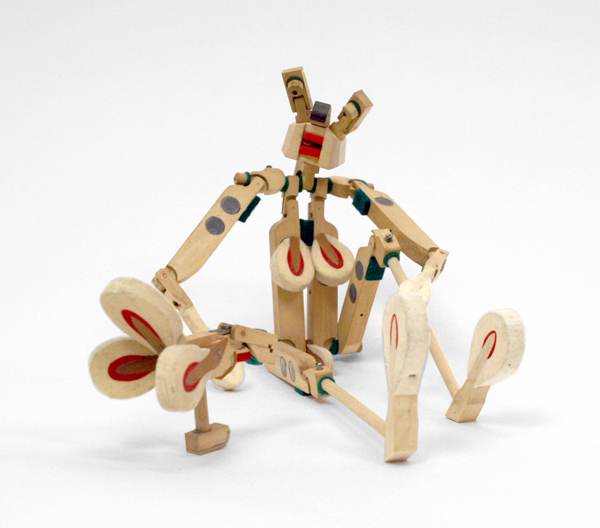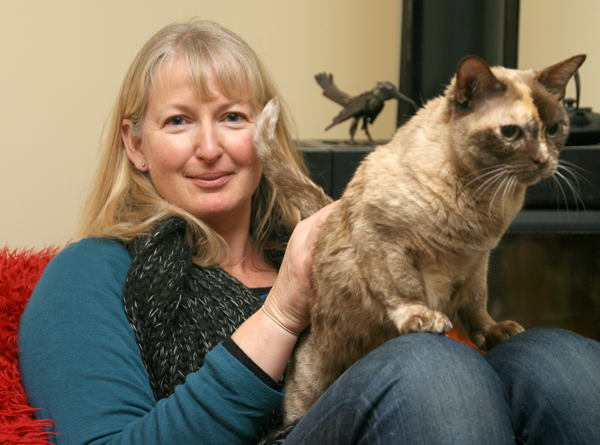
Susan Cummins: Can you tell your story? How did you find your way to making jewelry?
Nadine Smith: I currently work part-time as a school nurse and part-time making art. Juggling different careers and head spaces and everyday life experiences heavily influences my making.
Growing up on the Kapiti Coast in the North Island of New Zealand, my brothers and I got to enjoy the semirural freedoms of not living in a city. We had a lot of adventurous play. Both my parents worked hard and on weekends and vacations we had free rein to explore. As a family we would comb the beach and go rock and fossil hunting for treasures on our weekend walks. This fostered my long-term curiosity for collecting stuff.

I found my way into making jewelry when I continued my art studies at Whitireia Community Polytech. I was studying for a bachelor’s in visual arts and found myself gravitating to Peter Deckers’ class to develop some sculptural objects using metal. Peter is a champion of all things jewelry here in New Zealand and he passionately supports the development of his students in and outside of the institute. He and the other tutors were very supportive during my time there. It was during these studies that I met and developed ongoing friendships with other makers, some of whom I share a studio with today. Art is an outlet that allows me to talk about challenging themes but also to wonder and let my imagination have free reign to explore the more humorous side of life.
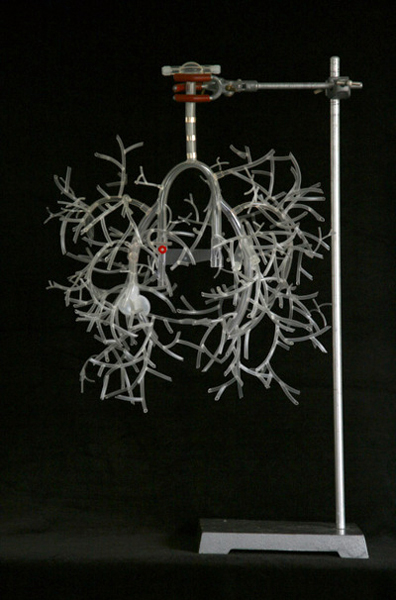
In the past your jewelry relied very much on medical images and tools. Do you want to discuss what you were trying to do with that work?
Nadine Smith: I worked for some time as a home dialysis nurse, training people to do their own dialysis and supporting them in their home environments. The people that I worked with touched my life intimately. In my personal life I was also dealing with the poor health of family members. It is difficult not to be affected by the lives, and often loss, of people you work with and care for. I think creating work using recycled medical components allowed me to process these events while at the same time creating an avenue for others to talk about difficult topics. I explored ideas of life support with technological intervention by creating artworks using materials loaded with their own inherent meanings.
This recent jewelry is made up of parts of a defunct piano and other ephemera. What was inspiring to you about these objects?
Nadine Smith: More recently, working with piano parts and other found objects has been a refreshing change. In some ways it gives me time out from tackling the hard stuff by allowing my hands and mind to work with materials that don’t have a clinical leaning. I can create work in a more whimsical and lighthearted manner. The parts, with their mechanisms, instinctively reminded me of the body; they lend themselves to puppet-like sculpture. After this initial development, the more I took the components to pieces and played with the parts, the more possibilities for jewelry and objects surfaced, as in the tooth-like neckpiece Grin and Wear It.
Taking time out in nature is my way of recharging. I am attracted to all kinds of discarded materials, whether organic or inorganic. With my selective pickings, certain objects have more appeal than others, depending on their form and color. I chose bits of driftwood because of the wear and tear of time on their form. Nothing in life goes unaffected. One piece I embellished with faceted pieces of ebony from piano keys while other pieces I spray-painted black—giving a new surface appearance to their weathered forms.
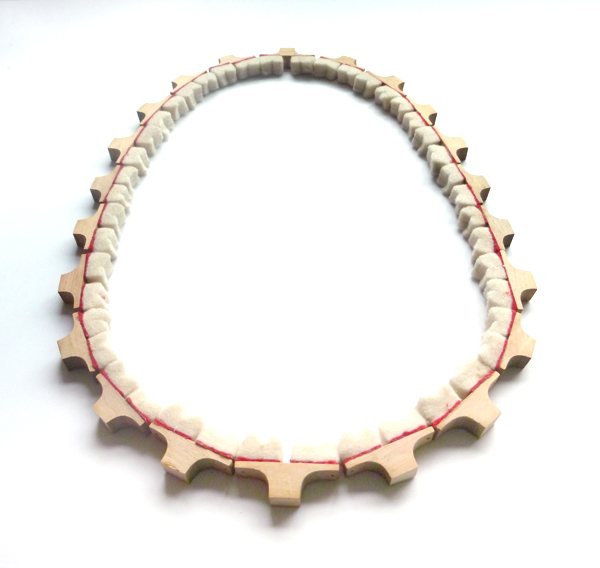
What are the stories you think these pieces hold? What is the new meaning you have given these found pieces?
Nadine Smith: As I dismantled the piano I thought of it playing out life’s stories in sound. I wondered how I could continue to get the piano to play on in a figurative way, essentially giving it new life. The disassembled bits intuitively drew me to re-creating character-full forms. To me these pieces tell a story about taking time out and remembering the importance of play. The puppet-like sculptures, with their moveable parts, want to be manipulated or animated. The story they tell is open to the viewer. The bird-like creatures interacting with the characters suggest taking time out in nature. Last year my partner and I bought a home on the top of a hill in Wilton. We get all sorts of bird life landing on our balcony, including the native kaka. Thanks to the efforts of Zealandia bird sanctuary, native bird life has flourished in Wellington city.
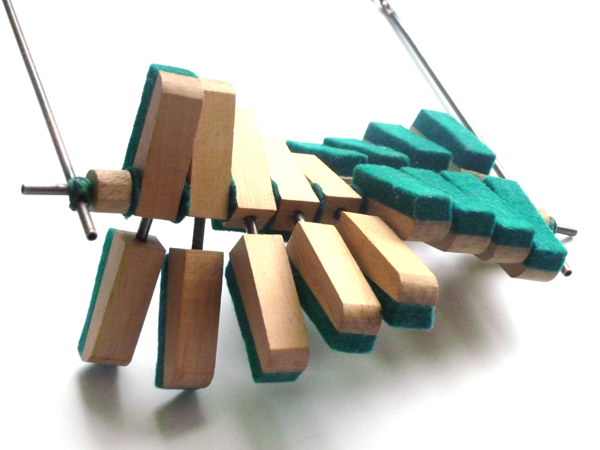
What is the story you tell yourself about what contemporary jewelry can be?
Nadine Smith: I think contemporary jewelry can be anything you can imagine. I don’t want to restrict myself to any form of convention though sometimes it’s difficult to break down my own self-imposed internal rules. It is only limited by the extent of my imaginings, courage, and technical ability; however, where there’s a will there’s a way! I want my jewelry to create or relate a conversation and push the limits of what is commonplace. To gain a smile or let wearers tell their own stories.
Just curious, why did you choose pigletinspace@gmail.com as your email address?
Nadine Smith: Because it had a sense of fun. Lost in my own imaginings, I was entertaining thoughts about Miss Piggy from the Muppets and their recurring segment Pigs in Space. I think I identified a little with her character, not to mention her love of food and of Kermit. I was surprised nobody else had thought of using it when I secured it as my own.
Thank you.
